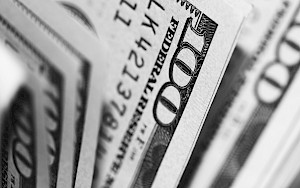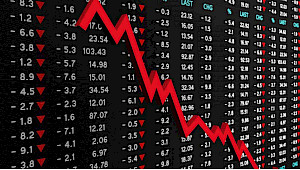American elites are living in a delusional universe. Here’s why the next crisis will make the 2008 recession look like a garden party
November 29, 2023Originally published in The Toronto Star on October 31, 2023 as contributing columnist
I recently stumbled upon an article I wrote exactly 20 years ago. It was only the second piece I had ever written, and at the time I had no experience in the art of writing. Reading it 20 years later makes me cringe at the grammar and the overuse of too many clever metaphors. However, the point I was making still applies, especially as I see the predictions I made then unfolding before me ever since.
Titled “The Good, the Bad, and the Ugly,” my 2003 article was a critique of what I believed to be the beginnings of the unravelling of America’s fiscal and monetary system. As the U.S. embarked on its invasion of Iraq based on made-up accusations of weapons of mass destruction and ties to al-Qaeda, I drew a comparison between America and the experience of the 16th-century Spanish empire.
“The experience of the 16th-century Spaniards makes for the best comparison with the Americans of today,” I wrote. “For nearly 100 years, immense supplies of gold and silver (the likes of which Europe had never seen before) from the natives of Central and South America flowed into Spanish coffers. Sadly, this 16th-century version of excessive money supply growth managed only to fuel the nations’ spending habits, while at the same time disincentivizing their willingness to produce.”
Similarly, in just over 50 years, the U.S. went from being the world’s largest manufacturer and exporter of goods to the world’s largest consumer. Seventy per cent of America’s GDP is private consumption.
At the end of the Second World War, the U.S. had most of the world’s gold and half its GDP. But the gold supplies dwindled and, were it not for its dollar’s supreme reserve status, corporate America would never have been able to acquire global assets on the cheap and the transition to a consumption economy would have been impossible.
My article continued: “As a result, Spain’s debt to foreigners soared and all the gold and silver was exported out of the country (think current account deficit without the ability to ‘print’ more gold). With all this new-found wealth, it didn’t take long for the kings of Spain to think themselves superior and embark on a mission of bending the world to their will ... Boasting their technologically superior Spanish armada (not dissimilar to America’s air supremacy), they waged what proved to be a disastrous war against Britain whose smaller ships proved far too wily. Years of wars ensued with a variety of other countries that did not share Spain’s view of the world. Having already traded their gold and silver for consumer goods, the nation had to turn to debt-finance to pay for these wars.”
Sound familiar?
“As Spain’s tab reached its limit, their lenders were forced to convert their debt into long-term loans. Eventually, Spain’s creditors cut them off and the nation, now bankrupt, introduced to the world the now time-honored tradition of default by a sovereign state.”
Foreign buyers of U.S. treasuries, the mainstay of America’s debt-driven economy, are slowly disappearing from treasury auctions and many, like China, are actually selling their existing holdings.
My article concluded: “Of course, in their time, very few of the above-mentioned governments or their citizens would have ever believed such an economic fate would befall them. I suspect most Americans today wouldn’t either. Truly amazing when one looks at the current sad state of America’s public and private balance sheet, and its voracious consumption appetite. For although past global powers had their excesses, it took the Americans to really put the ‘pro’ in the term profligate.”
To many, my comments seemed overly harsh and alarmist. But as you scroll forward 20 years and assess the current state of play, the facts tend to validate the predictions. In fact, in 2003 — as alarmist as I came across — I never could have predicted the system would have remained intact with the stats we see today.
By every metric, America’s fiscal health has deteriorated badly. Its trade deficit with the rest of the world has doubled over the past two decades. At $17 trillion, total U.S. household debt has risen 2.5 times.
But it’s U.S. government debt that has truly spiralled: it’s up fivefold at a whopping $33.5 trillion — around $2 trillion more than a year earlier and growing exponentially. Congressional Budget Office projections forecast the annual federal deficit will average $2 trillion per year from 2024 to 2033. So add another $20 trillion to the future debt pile.
Most sane economists have stated this trend is unsustainable, yet no policymaker has the courage to address the situation intelligently. Why?
Well, it’s simple. Why try to sell the public on what would constitute very unpopular tax hikes or cuts in services when you can simply print your way out of the problem? Monetizing federal debt is easy. At the press of a button, the Federal Reserve can simply create new money out of thin air and buy the U.S. treasuries directly from the government.
In 2002, the Fed’s balance sheet was a paltry $720,722 million. As of Nov. 1, 2023, the Federal Reserve had roughly $7.87 trillion worth of assets. The result from all this money printing is the recent high inflation we have experienced and it eventually may lead to hyperinflation, a phenomenon that will only emerge when the American public losses faith in its own currency.
The Spanish government tried a similar gimmick. “The government tried to escape its financial problems by issuing a debased copper coinage, the vellon, but was still forced to declare a moratorium on its debts, or in effect acknowledge bankruptcy, in 1607,” I wrote in my 2003 piece.
“Forever wars” will also lead a nation to ruins. It was said of the 16th-century Spaniards that “massive amounts were spent on crusading against both Islam and Protestantism.” Crusading has always been an expensive undertaking.
Today, 20 years after the U.S. invasion of Iraq, the cost of its global war on terror stands at $8 trillion, according to a new report from the Costs of War project at Brown University.
It is noteworthy that the period between Francisco Pizarro’s conquest of the Incas in 1532, and the subsequent plundered riches that flowed into Spanish coffers and then the empire’s default in 1607 was a mere 75 years. America became the world’s economic and military superpower in 1945. Do the math.
American policy and business elites are living in a delusional universe where they continue to hang onto a world view that “American exceptionalism” will spare them from the fate that countless other global powers met in the end. They also believe that “There Is No Alternative” (TINA) to the U.S. dollar as the supreme reserve currency.
After 45 years of financial market experience, I have learned that stocks, sectors and entire markets can be incredibly overvalued — and still go a lot higher — before they finally burst. This apparent invincibility lures many into believing the party will never end.
In 2008, we were told the system worked — until it didn’t. Given the explosion of debt and money printing over the last 15 years, the next crisis will make the global recession of 2008 look like a garden party.
If you don’t believe me, look up the history of not only the Spaniards, but also the Dutch, the French and the British. They also thought their party would never end.










